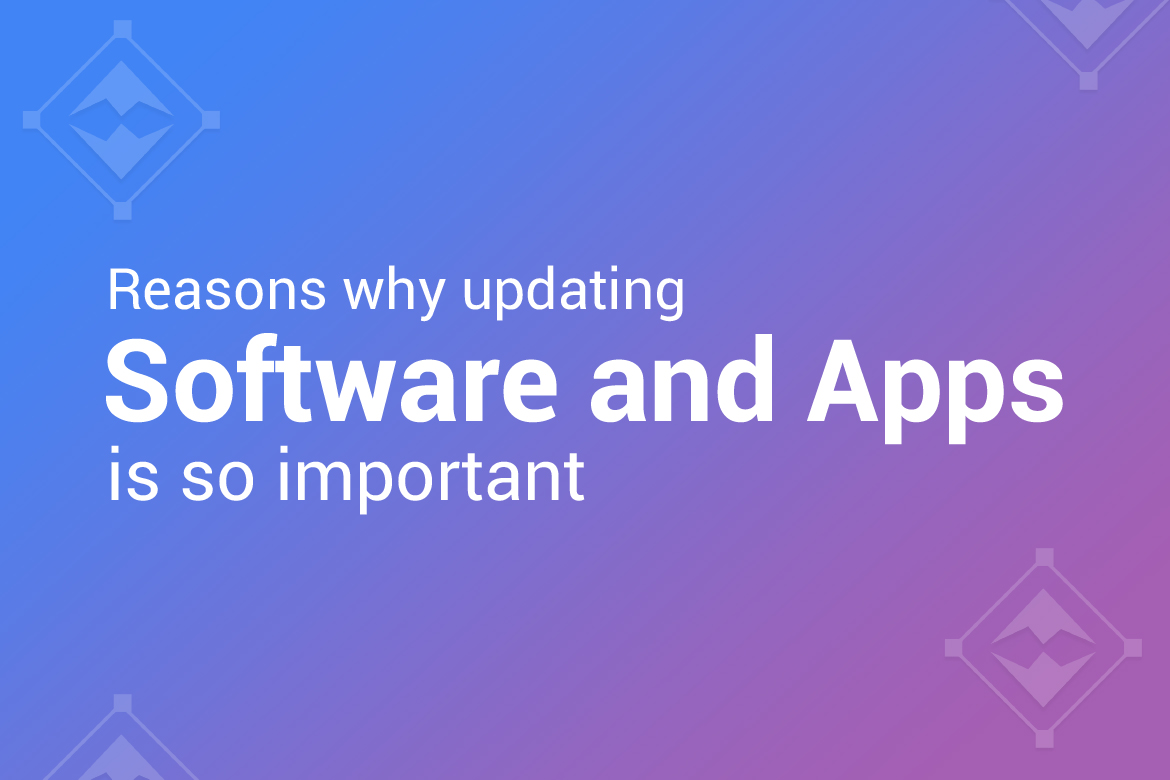Reasons why updating software and apps is so important

It’s a familiar story for any computer or device user - right when you’re in the middle of something important, your app or Operating System (OS) stops you in your tracks with a prompt for an update. We’ve all been there and have likely all been tempted just to keep working on what we were doing, only to completely forget the update prompt.
However, while app or software updates might seem like a pain, they are crucially important to maintain the security of your programs, device or website. While these small reminders might seem like a needless annoyance, they’re actually of crucial importance to your security.
The constant battle between developers and cybercriminals
The costs of cybercrime in 2021 alone are expected to tally $6 trillion - and forecasters suggest that figure could increase by 15% per year in the coming years, eventually totaling around $10.5 trillion by 2025. Taken like for like, the revenues generated by cybercrime make it the world’s third-largest economy, just behind the US and China.
With such large figures, it’s little wonder that hackers are constantly on the lookout for ways to exploit existing systems and software, meaning developers are faced with a constant challenge trying to identify and secure potential backdoors and weaknesses to protect their clients - i.e. you.
Using outdated software is akin to leaving your front door open with the lights on
One of the most common ways cybercriminals infiltrate otherwise relatively secure systems is through outdated software. No matter how good your antivirus, firewall or similar security setup is, if you don’t update software and Operating Systems regularly, you are effectively leaving yourself wide open to attack.
Also, contrary to what many people think, hackers these days aren’t just targeting large multinationals - rather, anyone that spends any time online is at risk, including individual users. Whether you just use the web for email and casual browsing or you have a company that is heavily reliant on data and the internet, the risks remain the same. Sure, it could be argued that the revenue a hacker can make from breaching a company’s data is higher but, when you take individual user attacks as a whole, the money soon mounts up.
The most common forms of cyberattack
Most people these days are aware of the more common types of cyberattacks, however, as populations wake up to the dangers of working online, hackers are being forced to devise increasingly more sophisticated methods to breach data. Below are just a few of the ways hackers are launching attacks:
Phishing: Phishing is a form of social engineering attack that aims to exploit the natural human trait to trust. In phishing, a hacker will typically masquerade as a known and trusted contact of the victim in order to persuade them to part with sensitive data. Most phishing attacks are launched via email featuring bogus web links directing the user to seemingly official sites. Sometimes phishing emails also make direct requests for information that users otherwise wouldn’t divulge.
WordPress website hacks: WordPress (WP) has come a very long way in a very short time and now powers 37% of all websites globally - plus 60% of all Content Management System (CMS) websites. Where once WP was viewed primarily as a blogging platform, it is now an accepted and widely-used CMS that drives many of the world’s biggest and most popular sites. Indeed, WP is now so ubiquitous that it even powers larger corporate sites like Sony Music and BBC America. With the WordPress platform now in such wide use, it’s perhaps not surprising that hackers are increasingly turning their attention to finding ways to exploit the CMS. Whether you’re running a blog or are using WP as the framework for your company site, you should think about hiring a firm that can provide WordPress maintenance services to keep yourself safe – plus make updates to content.
Distributed Denial-of-Service (DDoS) attacks: In a Distributed Denial of Service attack (DDoS), hackers will send multiple requests to a site in order to flood it with internet traffic, with the aim of bringing the server down. DDoS attacks typically use other compromised servers, sites, or Internet of Things (IoT) devices to effectively launch a mass of attacks from multiple different sources.
Man-in-the-Middle (MitM) attacks: When a hacker employs a Man-in-the-Middle attack, they will infiltrate data in transit - normally as it passes between a user and a site, service or web-based app. While these types of attack are usually directed against individuals, they still pose a considerable threat for the provider company as a breach of this kind doesn’t just expose the user - it potentially opens the door into the provider’s data as well. A MitM attack is similar to a hacker eavesdropping on a customer speaking their card details or other sensitive information over the phone.



